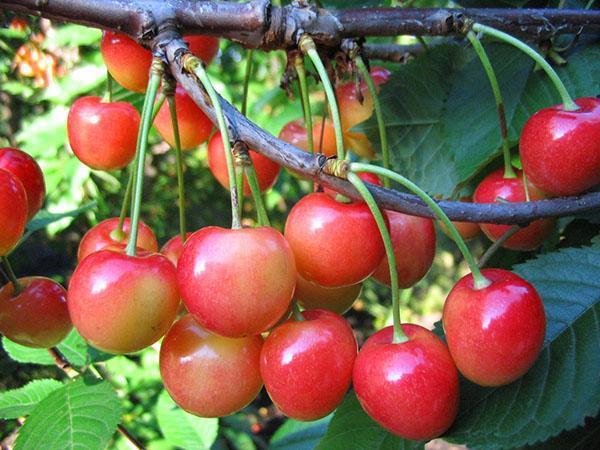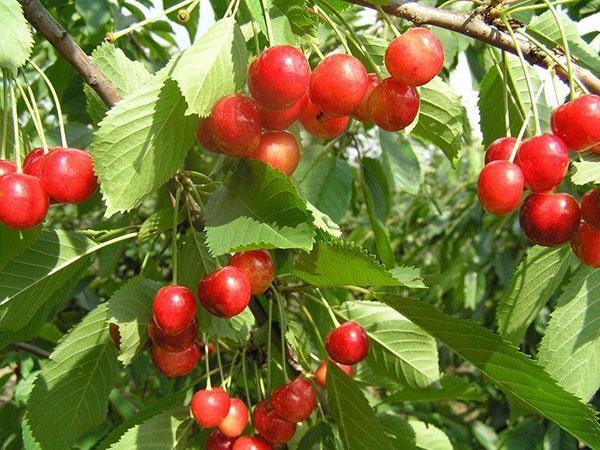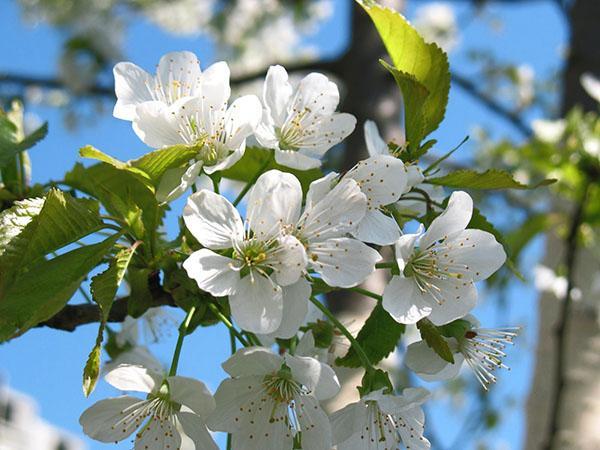Fatezh cherry varieties must grow on your site
 So that summer residents do not wait for sweet cherries to ripen in the south, and then the harvest hits stores and markets in central Russia, breeders are working on developing new, hardy varieties. Sweet cherry Fatezh, the description of the variety and the care features of which will help you get to know this fruit crop better, perfectly takes root in the Moscow region and other regions of the Central Region, as well as in the Black Earth Region and even in the North-West.
So that summer residents do not wait for sweet cherries to ripen in the south, and then the harvest hits stores and markets in central Russia, breeders are working on developing new, hardy varieties. Sweet cherry Fatezh, the description of the variety and the care features of which will help you get to know this fruit crop better, perfectly takes root in the Moscow region and other regions of the Central Region, as well as in the Black Earth Region and even in the North-West.
Appearance and characteristics of Fatezh cherry

What are the distinguishing features of this fruit crop? What are its strengths, and are there any disadvantages to consider when planting and nursing?
Gardeners with experience in growing sweet cherries know that most varieties form tall trees, reaching a height of 5–8 meters without regular pruning of the crown. Cherry Fatezh grows up to 3-5 meters, which simplifies the collection of fruits and planting care.
The trees are distinguished by a spherical, medium-dense crown, which becomes more spreading or even drooping with age. Strong skeletal branches, covered with smooth brown bark, extend from the main trunk at an obtuse angle. Young shoots are brown in color, and a thick short stem is grayish brown.
The branches are covered with large, broadly lanceolate, with pointed tips and finely serrated leaves. The leaf plates are smooth, but unlike the cherries habitual in the middle lane, they are not rigid. The upper side has a slight sheen and a brighter shade. The leaves are held on strong stalks, turning into embossed veins on the back.
 As you can see in the photo and from the description of the Fatezh cherry variety, the flowering of trees begins as early as 4–5 years, takes place in the early and middle periods, which coincides with the opening of young foliage. The buds are laid on bouquet branches and one-year-old shoots. White, medium-sized flowers with long stamens and wide corollas are gathered together in several pieces.
As you can see in the photo and from the description of the Fatezh cherry variety, the flowering of trees begins as early as 4–5 years, takes place in the early and middle periods, which coincides with the opening of young foliage. The buds are laid on bouquet branches and one-year-old shoots. White, medium-sized flowers with long stamens and wide corollas are gathered together in several pieces.
Features of fruiting cherry varieties Fatezh
 The early-fruiting variety almost immediately after the start of fruiting gives the gardener several kilograms of juicy fruits with a yellow base color and a pronounced red blush.
The early-fruiting variety almost immediately after the start of fruiting gives the gardener several kilograms of juicy fruits with a yellow base color and a pronounced red blush.
By the age of 10, with the right place for planting and caring for Fatezh cherries, the yield of the garden increases to 30 kg per tree. The record for this variety is 50 kg with excellent fruit quality and appearance.
The mass of a round, with a shiny bright skin and dense pulp of the fruit is from 4, 3 to 6 grams.Among the majority of varieties adapted to the conditions of the middle zone, Fatezh stands out for its attractive yellow-pink color, which gives a noticeable blush to light drupes. The pulp under the skin has a yellowish-pink tint with an abundance of juice and a dense, elastic texture. The medium-sized pit is easily separated from the juicy tissue, which makes it easy to peel the cherries for jam, compote or a delicious homemade cake.
In expert tasting, fruits that are sweet with a pleasant sourness are rated at 4.7 points out of the maximum five. 100 grams of pulp contains:
- 18 grams of dry matter;
- up to 12 grams of sugars;
- no more than 2 grams of acids, including 29 mg of vitamin C.
 Ripe cherries are separated from their short stalks without damage and, thanks to their dense pulp, do not wrinkle for a long time, they can be transported and stored. According to the description, the Fatezh cherry variety has a universal purpose. Fresh fruits will become both an excellent dessert and a raw material for conservation.
Ripe cherries are separated from their short stalks without damage and, thanks to their dense pulp, do not wrinkle for a long time, they can be transported and stored. According to the description, the Fatezh cherry variety has a universal purpose. Fresh fruits will become both an excellent dessert and a raw material for conservation.
Housewives will definitely appreciate Fatezh cherry in compote, to which it gives a beautiful pinkish tint and does not crack during heat treatment.
Planting and caring for Fatezh cherries
 Cherry Fatezh is appreciated by gardeners for its endurance, stable yield, excellent fruit quality and winter hardiness. The heat-loving culture, thanks to breeders, has gained the ability to survive the harsh long winters of a temperate climate.
Cherry Fatezh is appreciated by gardeners for its endurance, stable yield, excellent fruit quality and winter hardiness. The heat-loving culture, thanks to breeders, has gained the ability to survive the harsh long winters of a temperate climate.
Speaking about the characteristics of the Fatezh cherry, one cannot miss its high resistance to such common diseases of stone fruit crops as coccomycosis and moniliosis.
Like the Vladimir cherry, traditional for the Moscow region and other regions of central Russia, Fatezh can withstand temperatures as low as –27 ° C. Perennial wood is not damaged in this case. Only flower and growth buds can suffer, which the tree quickly regenerates. Even if the crown freezes, if the cherries are properly cared for, the tree's yield returns after a few years.
The main weak point of Fatezh cherries is self-sterility. In order for fruits to appear on the branches, the gardener should take care of planting trees of other varieties in the neighborhood that bloom at the same time. For the Moscow region and more southern regions, the cherry trees Iput, Sinyavskaya, Chermashnaya, Raditsa and Ovstuzhenka... Their pollen will help Fatezh to form many ovaries. Conversely, this variety will be an excellent pollinator for other early to mid-flowering varieties.
How to get a good harvest of cherries - video